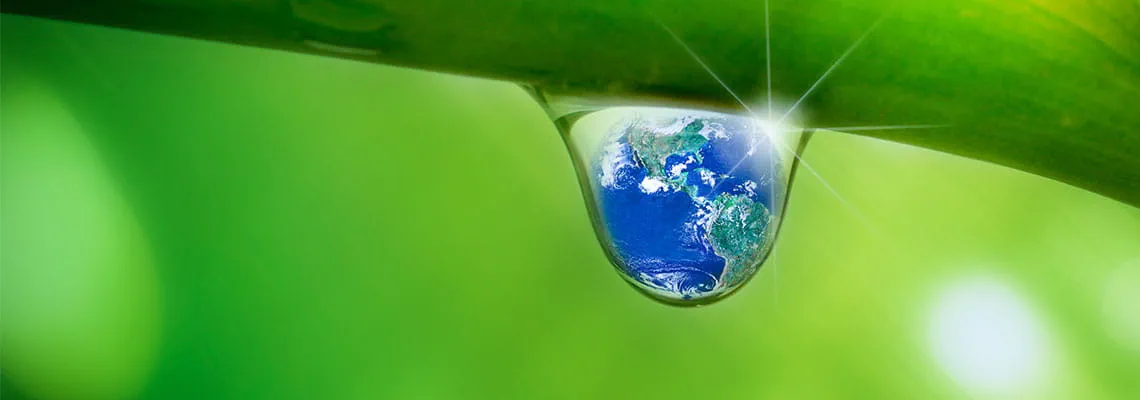|
Table of contents |
|---|
Sustainable water: our essential guide to sustainable water resource management solutions & strategies
Sustainable water means a nation that can be water self-sufficient: ensuring there is enough water to meet multiple needs, from agriculture to municipal and industrial. It also means water supply will remain consistent, despite climate change impacts, such as a lack of rainfall and drought, or too much rain and being flood resilient. Sustainable water also means that the economics stack up in matching supply and demand and the water delivery process is as efficient as possible. Water sustainability, meanwhile, can also mean energy neutrality by coupling traditional water treatment technologies with renewable energies. The following article is designed to provide everything you need to know about sustainable water.
What is water sustainability?
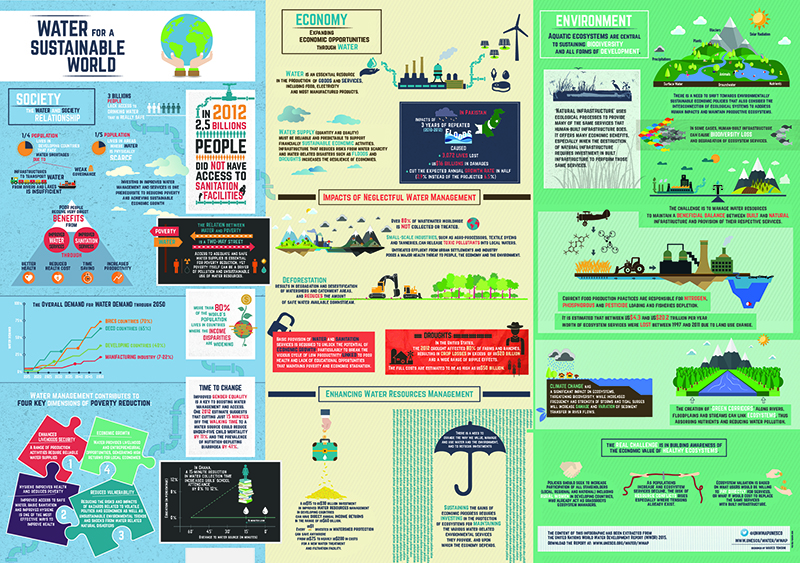
Image credit: the United
Sustainable water management means the ability to meet the water needs of the present without compromising the ability of future generations to do the same. Achieving sustainable water management requires a multidisciplinary and holistic approach in which technical, environmental, economic, landscape aesthetic, societal and cultural issues are addressed.
On a global scale, having sustainable water means to provide each person on the planet with affordable access to the minimum 20 to 50 litres of daily water required to sustain life. This follows the United Nations General Assembly recognition of “the right to safe and cleaning drinking water and sanitation as a human right that is essential for the full enjoyment of life and all human rights”.
Water sustainability also means effective and holistic management of water resources. There are now multiple demands on water resources, which drive the need for sustainable, integrated and holistic water management.
UK regulator Ofwat describes ‘Sustainable water’ as: “A sustainable water cycle in which we are able to meet our needs for water and sewerage services while enabling future generations to meet their own needs.”
For water utilities, this can mean effective planning for water and wastewater systems to manage their operations and infrastructure and ensure the sustainability of the communities they serve, according to the Environmental Protection Agency (EPA) in the US. The Agency said the benefits of considering sustainability during infrastructure planning include:
- Optimising environmental, economic, and social benefits by setting goals and selecting projects through a transparent and inclusive process with the community
- Realising consistency across a range of alternatives that address both utility and community goals and
- Enhancing the long-term technical, financial, and managerial capacity of the utility.
Typically, water utilities have a long-term planning horizon and long-term infrastructure operation and maintenance commitments. The costs and potential benefits of investment decisions are realised over a long period of time. Accordingly, EPA’s Sustainability Policy calls on drinking water and wastewater systems to undertake “robust and comprehensive” planning to ensure that water infrastructure investments are cost-effective over their lifecycle, resource efficient, and consistent with other relevant community goals.
Levels of water sustainability will also differ between utilities. Some utilities and communities have been incorporating sustainability considerations into their planning processes but are looking for ways to improve and refine their current efforts. Others may choose to focus on how such considerations can help to cost-effectively meet existing regulatory or service requirements.
Sustainable water solutions: the basics
Sustainable water systems should provide adequate water quantity and appropriate water quality for a given need, without compromising the future ability to provide this capacity and quality, according to the IWA.
The association states: “Water systems in the realm of sustainable development may not literally include the use of water, but include systems where the use of water has traditionally been required. Examples include waterless toilets and waterless car washes, whose use helps to alleviate water stress and secure sustainable water supply.”

Image credit: U.S Geological Survey
The following list from the IWA addresses how different water sources can be used sustainably:
Surface water
Surface water is limited as is unequally distributed around the world and pollution from various activities means that surface water without treatment is not suitable for drinking. If properly constructed, dams can provide a sustainable water supply as the structures can be used for power generation, irrigation, flood prevention, water diversion and navigation. However, large-scale dam projects may present challenges to sustainability: negative environmental impacts on wildlife habitats, fish migration, water flow and quality and socioeconomic impacts. Therefore, a sustainability impact assessment should be performed.
Groundwater
Groundwater accounts for more than 50 per cent of global freshwater and is critical for potable water. Groundwater can be a sustainable supply of water only if the amount of water entering, leaving and being stored in the system is conserved. The IWA says unsustainable groundwater use results in water-level decline, reduce streamflow and low quality water, directly impacting local communities.
Desalination
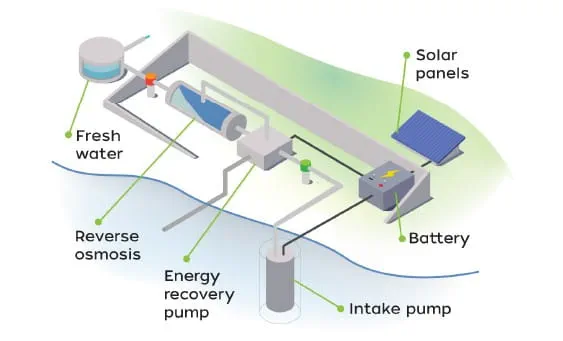
Image credit: Elemental Water Makers
In some nations lacking freshwater, desalination has provided an adequate water supply for many years. However, higher energy demands from both thermal and membrane-based compared to groundwater and surface water treatment have challenged the adaption of desalination as a sustainable one. However, the IWA said that sustainability of desalination could be improved if it is coupled with renewable energy. Decentralised, solar power desalination has been recommended as a way to provide more sustainable water for Greece’s 6000 islands.
Reclaimed water

Image credit: Tata & Howard
Reclaimed water, or water reuse as it’s known, can also be a sustainable source for water supply and can alleviate stress on primary water resources, such as surface and groundwater. Depending on the given application, reclaimed water must be treated to provide an appropriate quality, for example for irrigation or industry use. The level of water reuse varies globally. Countries such as Spain and China continue to lead the way in water reuse, with the later accounting for 49 percent of capacity contracted between 2010 and 2017.
Sustainable water resources management
Sustainable water supply is a component of integrated water resource management, according to the IWA. The association identifies it as the “practice of bringing together multiple stakeholders with various viewpoints to determine how water should best be managed”. To decide if a water system is sustainable, various economic, social and ecological considerations must be considered.
Meanwhile, the United Nations (UN) has outlined the following areas where sustainable water resources management will need to take place, which ties in with its overarching goal of “Securing Sustainable Water for All”.
Agriculture

Image credit: Aquatech
Agriculture is by far the thirstiest consumer of water globally, accounting for 70 per cent of water withdrawals worldwide, although this figure varies considerably across countries. Rainfed agriculture is the predominant agricultural production system around the world, and its current productivity is, on average, little more than half the potential obtainable under optimal agricultural management. By 2050, world agriculture will need to produce 60% more food globally, and 100 per cent more in developing countries.
Industry and energy
Together, industry and energy account for 20 per cent of water demand. More-developed countries have a much larger proportion of freshwater withdrawals for industry than less-developed countries, where agriculture dominates. Balancing the requirements of sustainability against the conventional view of industrial mass production creates several conundrums for industries. One of the biggest is globalisation and how to spread the benefits of industrialisation worldwide and without unsustainable impacts on water and other natural resources.
Domestic sector
Municipal water use accounts for 10 per cent of total water use. And yet, worldwide, an estimated 748 million people remain without access to an improved source of water, and 2.5 billion remain without access to improved sanitation.
Cities
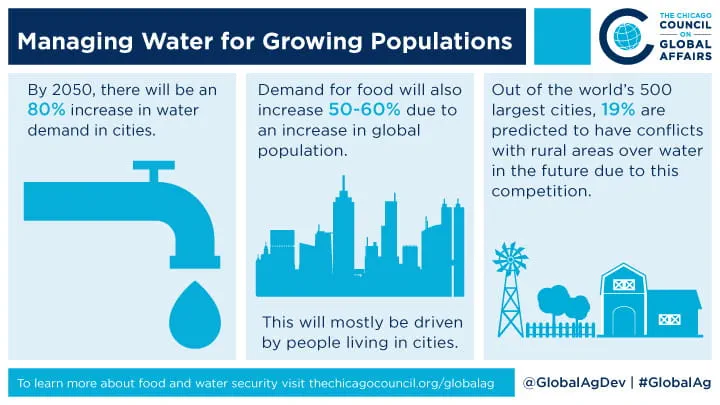
Image credit: Chicago Council on Global Affairs
More than half the world already lives in urban areas, and by 2050, it is expected that more than two-thirds of the global population of nine billion will be living in cities. Furthermore, most of this growth will happen in developing countries, which have limited capacity to deal with this rapid change, and the growth will also lead to increase in the number of people living in slums, which often have very poor living conditions, including inadequate water and sanitation facilities. Therefore, the development of water resources for economic growth, social equity and environmental sustainability will be closely linked with the sustainable development of cities.
Ecosystems
Perhaps the most important challenge to sustainable development to have arisen in the last decades is the unfolding global ecological crisis that is becoming a barrier to further human development. From an ecological perspective, sustainable development efforts have not been successful. Global environmental degradation has reached a critical level with major ecosystems approaching thresholds that could trigger massive collapse. The growing understanding of global planetary boundaries, which must be respected to protect Earth’s life support systems, needs to be the very basis of the future sustainable development framework.
Sustainable water management strategies: three examples
Sustainable water strategies will be devised by the regional and national governments and will vary depending on a variety of factors: maturity of water infrastructure, impact and risks from climate change, level of governmental ambition, regulation and access to finance, among others.
According to the IWA, sustainability is as much an outcome as a goal. The conceptual framework for Sustainable Water Resources Management considers water as a renewable, but finite resource with global and regional constraints. This should integrate ecological, economic, and social considerations through institutional and legal/regulatory constructs to move toward sustainable water resources.
There are multiple case studies where government-led sustainable water management strategies have been developed, taking into account national regulations. Below we have listed three very different examples, from city to state and country wide in scope:
Country-wide sustainable water: A long-term water strategy for Northern Ireland

Image credit: Aquatech
This wide-ranging strategy focuses on the sustainable management of water in rivers, lakes, loughs and aquifers used for domestic, agricultural and industrial cases. The document proposes how excess rainwater can be managed sustainably locally to reduce the impact of flooding on communities. It also examines how we can reduce the amount of energy needed to move and treat drinking water and wastewater.
State-wide: sustainable water strategies for Victoria, Australia
In a statuary process for state-wide water resource planning in the Australian state of Australia, there are four regional water strategies. Driven by The Water Act 1989, these sustainable water strategies have to be reviewed at least every 10 years. The review of the Central Region Sustainable Water Strategy started in 2016 and is now complete. The five-year assessments of the Western Region and Gippsland Region sustainable water strategies began in 2017 and are also complete. The review of the Northern Region Sustainable Water Strategy is expected to start in late 2019.
City-wide: Rotterdam – leading the way in urban resilience
The Dutch city of Rotterdam topped the Arcadis’ Sustainable Cities Water Index list. The city has been innovative and proactive in its approach to water management, including heavy investment into its reservoir catchment system. Rotterdam has become a showcase in urban resilience that directly leads to sustainable water supply: the city is among the highest in the world in terms of water reserves.
Water sustainability projects: Three examples
There are three examples of water sustainability projects:
Huaifang Underground Water Reclamation Plant (HWRP)
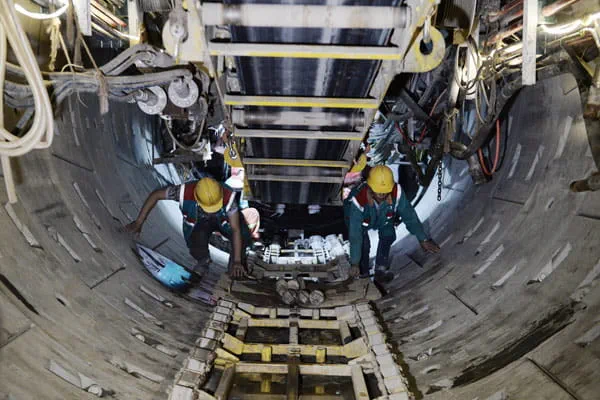
Image credit: China Daily
This project was awarded Gold in the 12th IWA project innovation awards as ‘Beijing’s sustainable solution for ecological water reuse’. The 31 hectare wastewater recycling plant was designed to ease sewage treatment pressure being experienced in the south of Beijing and to improve the water quality of the Liangshui River. The underground wastewater recycling facility will house four 160 square metre bioreactors, producing recycled water to level four (IV) of Environmental Quality Standards for Surface Water. As an underground treatment plant, the aim is for the facility to reduce land occupancy as well as containing any noise and foul odours emanating from the plant. Grey water will be used for industrial and municipal purposes while sludge will be treated and reused as landfill as well as forest soil enrichment.
Omdurman Water Supply Optimisation Scheme, Sudan
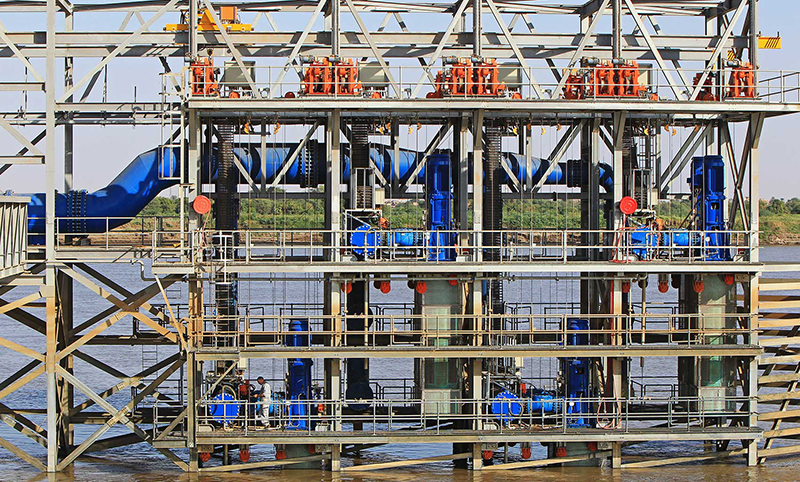
Image credit: Biwater
One of the most significant steps towards the Millennium Development Goals (MDGs) in sub-Saharan Africa in 2008, the Omdurman Water Supply and Optimisation Scheme was designed to alleviate critical drinking water shortage in and around the capital of Khartoum, Sudan. Biwater was contracted to finance and build a large-scale water treatment plant, primary distribution and storage, with an intake on the Nile, downstream of the confluence of the White Nile and the Blue Nile. The innovative intake structure was built to reliably manage challenging river level fluctuations, strong flows and large amounts of silt carried by the river during the rainy season each year. Interestingly, the innovative intake structure was designed by Biwater to rise and fall over two levels, coping with up to eight metre variances in the river level, as well as the sheer weight and intensity of the sediment carried in the water.
Improving conditions in the Andean communities

Image credit: Andres Times
A project known as AICCA is being rolled out in the Andean regions of Peru, Bolivia and Columbia that will focus on clean water and climate change. The Bank of Latin American Development and the Global Environment Facility have supported the project with a total of $10 million. The project aims to address the challenges of climate change with a focus on ensuring water sustainability in the Andean populations.
Sustainable water management: wedding renewables & water together
One development that physically embodies sustainable water management is renewable powered water systems, specifically solar powered desalination. It ties in with a goal set for 20 percent of new desalination plants to be powered by renewables between 2020-2025, by the International Desalination Association’s (IDA) Global Clean Water Desalination Association.
By bringing together renewable and desalination technologies, it is being seen as a vital combination to reduce the desalination carbon footprint in the short term.
To date, there have been several small-scale trials across the Middle East, Spain and India, bringing together concentrated solar power (CSP) and seawater desalination. The challenge has been to scale up the size of the operation and make it fully independent, without access to grid power as a back up when the sun isn’t shining. For example, currently, many developments revert to grid power during the night time to ensure continuous operation.
There is a notable case study in development in Saudi Arabia worth mentioning. February engineering firm Metito announced it had secured a contract with the King Abdullah Economic City (KAEC) to construct a “seawater desalination plant powered by solar energy”.
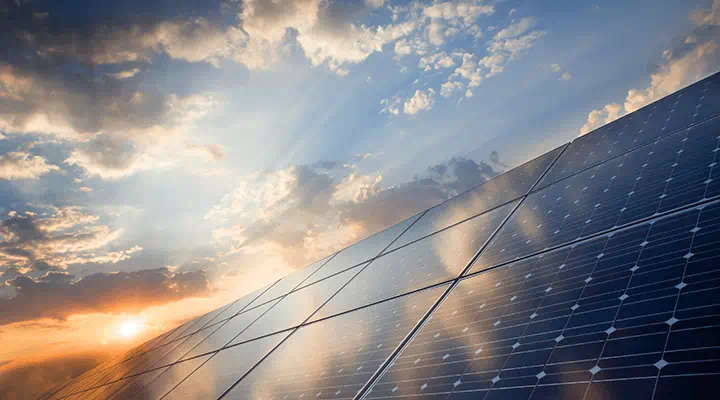
Image credit: Aquatech
Valued at SAR220,404,144 (US$58.7 million), the desalination plant will start with a capacity to produce 30,000 m3/day of drinking water, expandable to 60,000 m3/day. The project is expected to be in development for 24 months, with production slated to start in the first quarter of 2020.
The work includes a 2 megawatt (MW) solar plant that will be fully designed, procured, installed, commissioned and integrated with the RO system.
Other developments in this space include much smaller, off-grid solar powered desalination solutions. French engineering company Mascara Renewable Water has developed such a system that has been trialled in Abu Dhabi. It used a beach well to obtain seawater from a borehole near the sea. The natural sand filtration of the beach well eliminated the need for a dedicated pre-treatment system, according to the company.
Battery storage has also been touted as one way to have an independent solar and photovoltaic desalination plant. However, concerns remain about high investment costs needed, coupled with a long delivery time.

